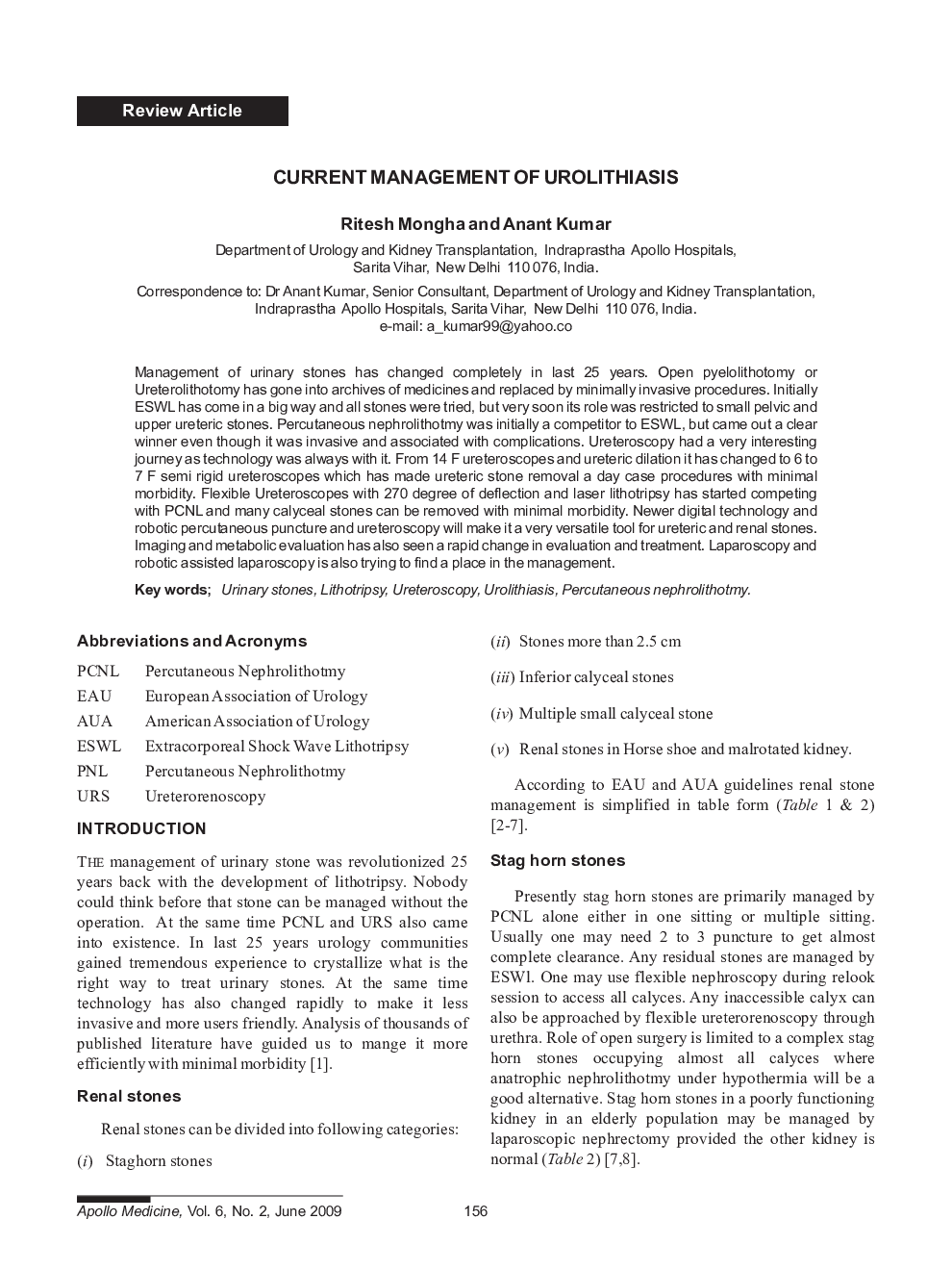| Article ID | Journal | Published Year | Pages | File Type |
|---|---|---|---|---|
| 3235425 | Apollo Medicine | 2009 | 5 Pages |
Management of urinary stones has changed completely in last 25 years. Open pyelolithotomy or Ureterolithotomy has gone into archives of medicines and replaced by minimally invasive procedures. Initially ESWL has come in a big way and all stones were tried, but very soon its role was restricted to small pelvic and upper ureteric stones. Percutaneous nephrolithotmy was initially a competitor to ESWL, but came out a clear winner even though it was invasive and associated with complications. Ureteroscopy had a very interesting journey as technology was always with it. From 14 F ureteroscopes and ureteric dilation it has changed to 6 to 7 F semi rigid ureteroscopes which has made ureteric stone removal a day case procedures with minimal morbidity. Flexible Ureteroscopes with 270 degree of deflection and laser lithotripsy has started competing with PCNL and many calyceal stones can be removed with minimal morbidity. Newer digital technology and robotic percutaneous puncture and ureteroscopy will make it a very versatile tool for ureteric and renal stones. Imaging and metabolic evaluation has also seen a rapid change in evaluation and treatment. Laparoscopy and robotic assisted laparoscopy is also trying to find a place in the management.
